 February 19, 2021 Oroville Dam Citizens Advisory Commission Public Meeting The California Natural Resources Agency held its sixth Oroville Dam Citizens Advisory Commission meeting on Feb. 19. The online public meeting included presentations on fire modernization at the Hyatt Power Plant, winter operations, and a presentation from the Yuba Water Agency on downstream flood management. Members of the public also asked questions and gained information on these and other topics. The Citizens Advisory Commission is a forum for the community to provide feedback and ask questions. The meeting transcript and presentations will be available on the Commission’s website (https://bit.ly/OrovilleCAC) in the coming weeks. Lake Oroville Boat Ramps The Lime Saddle Boat Ramp is now open for use along with Bidwell Canyon and Spillway boat ramps. Bidwell Canyon and Lime Saddle boat ramps are open 24-hours per day and the Spillway boat ramps are open from 6 a.m. to 8 p.m. daily. The Lake Oroville Marina at Lime Saddle is open 8 a.m. to 4:30 p.m. and the Bidwell Canyon Marina is open 7 a.m. to 8 p.m. The Loafer Creek boat ramps remain out of the water. Feather River Fish Planting Millions of fish are raised every year at the Feather River Fish Hatchery, including Chinook fall and spring run salmon, and salmon’s cousin, steelhead trout – another type of anadromous fish that migrates from their river birthplace to the ocean and back to their native river to spawn. Over the last two weeks, hatchery staff transported and released over 430,000 of the steelhead trout raised last year into the Feather River below Yuba City. Releasing the young fish further downstream improves their chances of survival by shortening their migration route to avoid predators. An additional 10,000 steelhead were also released into the Thermalito Afterbay to support that popular recreational fishery. The Feather River Fish Hatchery is a California State Water Project facility built in the late 1960s to mitigate impacts on fish migration resulting from the construction of Oroville Dam which blocked access to spawning grounds further upstream. DWR maintains the facility and funds the hatchery operations, fish spawning, rearing, and stocking activities provided by California Department of Fish and Wildlife staff. Photos of the steelhead trout release are available on the Department of Water Resources (DWR) Pixel webpage – search ‘fish release’. Photo: Dept. Fish and Wildlife release steelhead trout into the Feather River at Boyd's Boat Launch  Oroville Recreation The Lake Oroville State Recreation Area (LOSRA) campgrounds at Bidwell Canyon, Loafer Creek – including the Equestrian Campground, and the Lime Saddle Campground are open. Group camping, including floating campgrounds, and boat-in campgrounds remain closed. Reservation capability does not open until April and camping sites will be allocated on a ‘first come-first serve’ basis. The Potters Ravine and North Fork trails are open for use. CA Parks encourages users to remain on the trails. Assessments by CA Parks staff of trail safety will continue through the winter. All day use facilities at Lake Oroville State Recreation Area (LOSRA) are open. The Lake Oroville Visitors Center remains closed. Visit the California Parks LOSRA webpage for current information on facility status as well as current requirements to protect public health during the COVID-19 pandemic. Information about recreation facilities can be found in DWR’s interactive map on the Lake Oroville Recreation webpage. For information about the Oroville Wildlife Area, including the Thermalito Afterbay, visit the California Department of Fish and Wildlife webpage. Photo: Camping at the Lake Oroville State Recreation Area 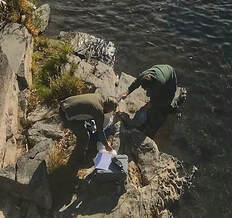 Thermalito Powerplant Update The Department of Water Resources (DWR) Thermalito Powerplant (THPP), formally named the Ronald B. Robie Thermalito Pumping-Generating Powerplant, has returned to full service after losing operational capacity when it was damaged by fire in November 2012. The powerplant has been re-constructed with modern fire and life safety features, and the plant’s electrical protection, control, and communications systems have been fully replaced. The thousands of connections in the plant’s new systems underwent the strict and rigorous ‘interconnection’ requirements of Pacific Gas & Electric (PG&E) to safely re-connect the powerplant to the state’s electrical grid. The THPP is one of three hydroelectric powerplants in the Oroville-Thermalito Complex, capable of generating 118 megawatts – enough to power roughly 100,000 households and adding value to the approximately 714 megawatts produced by Oroville Dam’s Edward Hyatt Powerplant. Along with the Thermalito Diversion Dam Powerplant, the Oroville-Thermalito Complex is California’s State Water Project’s leading producer of clean hydro-electric power. Photo: Power generation turbines at restored RBR Thermalito Pumping-Generating Powerplant  Wildfire Impacts on Water Quality The multi-agency “Watershed Working Group”, led by the California Governor’s Office of Emergency Services (CalOES), continues targeted monitoring of rivers, lakes, and other surface waters in the North Complex burn area and downstream. The Central Valley Regional Water Quality Control Board (Water Board), the California Department of Fish and Wildlife (CDFW), and the Department of Water Resources (DWR) collect and test water samples for analysis. The Water Board’s recent news release states elevated results found are not impacting drinking water treatment facilities nor the quality of drinking water. Water testing will continue and the Watershed Working Group will report results in the weeks ahead. The Water Board will alert the public if results show water quality may be impacted. Photo: DWR water quality experts collect water samples on the Feather River's Middle Fork Current Lake Operations The elevation of Oroville’s reservoir is about 708 feet elevation and storage is about 1.31 million acre-feet, 55 percent of historical average. Currently, in the Northern Sierra Basin, rainfall is below average, at 53 percent of normal for this time of year and snowpack is also below average at 67 percent of normal. Chance of light rain and snow showers in the higher elevations is forecasted this Saturday. Next week, beginning Feb. 22, expect dry conditions with a slight chance of rain towards the end of the week. The total releases to the Feather River continues to be at 1,250 cfs to conserve storage in Lake Oroville. The Feather River flows consist of 800 cfs down the Low Flow Channel through the City of Oroville, and 450 cfs from the Thermalito Afterbay Outlet (Outlet) for a total of 1,250 cfs for the Feather River’s high flow channel downstream of the Outlet. The public can track precipitation, snow, reservoir levels, and more at the California Data Exchange Center at www.cdec.water.ca.gov. Lake Oroville is identified as “ORO”. All data as of midnight 2/18/2021 ### Know someone who would like to receive Community Updates? They can email their request to [email protected].  February 12, 2021 Oroville Dam Citizens Advisory Commission Public Meeting The California Natural Resources Agency is hosting its sixth Oroville Dam Citizens Advisory Commission meeting on Feb. 19 from 9 a.m. to 11 a.m. The public meeting will be held online and will include presentations and public comment. The Commission will receive an update on fire modernization at the Hyatt Power Plant, winter operations, and a presentation from the Yuba Water Agency on downstream flood management. The Citizens Advisory Commission is a forum for the community to provide feedback and ask questions. For information on how to join the virtual meeting, please visit https://bit.ly/OrovilleCAC. Thermalito Powerplant Update The Department of Water Resources (DWR) Thermalito Powerplant (THPP), formally named the Ronald B. Robie Thermalito Pumping-Generating Powerplant, has returned to full service after losing operational capacity when it was damaged by fire in November 2012. The powerplant has been re-constructed with modern fire and life safety features, and the plant’s electrical protection, control, and communications systems have been fully replaced. The thousands of connections in the plant’s new systems underwent the strict and rigorous ‘interconnection’ requirements of Pacific Gas & Electric (PG&E) to safely re-connect the powerplant to the state’s electrical grid. The THPP is one of three hydroelectric powerplants in the Oroville-Thermalito Complex, capable of generating 118 megawatts – enough to power roughly 100,000 households and adding value to the approximately 714 megawatts produced by Oroville Dam’s Edward Hyatt Powerplant. Along with the Thermalito Diversion Dam Powerplant, the Oroville-Thermalito Complex is California’s State Water Project’s leading producer of clean hydro-electric power. Photo: Power generation turbines at restored RBR Thermalito Pumping-Generating Powerplant 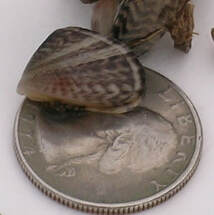 Wildfire Impacts on Water Quality The multi-agency “Watershed Working Group”, led by the California Governor’s Office of Emergency Services (CalOES), continues targeted monitoring of rivers, lakes, and other surface waters in the North Complex burn area and downstream. The Central Valley Regional Water Quality Control Board (Water Board), the California Department of Fish and Wildlife (CDFW), and DWR collect and test water samples for analysis. The Water Board’s recent news release, found at https://www.waterboards.ca.gov/centralvalley/ under Announcements, states elevated results found are not impacting drinking water treatment facilities nor the quality of drinking water. Butte County held a Facebook Live event on Feb. 10 to provide information and answer questions about the Watershed Working Group’s efforts to protect water quality. The event is available for viewing at https://fb.watch/3BrdT15tgQ/. Water testing will continue and the Watershed Working Group will report results in the weeks ahead. The Water Board will alert the public if results show water quality may be impacted. Photo: DWR water quality experts collect water samples at Lake Oroville 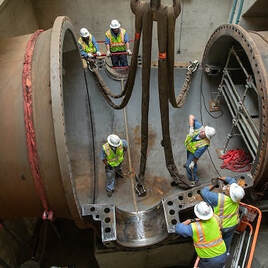 Lake Oroville Boat Ramps The Bidwell Canyon and Spillway boat ramps are open for use. Bidwell Canyon is open 24-hours per day and the Spillway boat ramps are open from 6 a.m. to 8 p.m. daily. The Lime Saddle and Loafer Creek boat ramps are currently still out of the water. The Loafer Point Stage II boat ramp project continues to construct six boat launch lanes and 180 trailered parking spaces to allow boaters to enter the lake when lake levels are below 805 feet elevation. This year’s low lake levels provided DWR the opportunity to build the ramp down to elevation 703 feet. When the lake levels are lower due to dry years in the future, the ramp will be extended to lower lake elevations. The Loafer Point Stage I boat ramp was completed in 2020 and added three new boat launch lanes from a full lake down to 799 feet, a new parking area, and new restroom facilities. Both facilities are adjacent to the Loafer Creek Recreation Day Use Area and Campground, rounding out a full-service recreation destination with nearby trails, campgrounds, boating and marina. Photo: Loafer Point Stage II boat ramp project  Oroville Recreation The California Department of Parks and Recreation (CA Parks), in compliance with the modification for the Greater Sacramento Region’s COVID-19 public safety restrictions, opened Lake Oroville State Recreation Area (LOSRA) campgrounds at Bidwell Canyon, Loafer Creek, including the Equestrian Campground, and the Lime Saddle Campground. En route camping at the North Forebay and Spillway facilities is permitted. Group camping remains closed. Reservation capability does not open until April and camping sites will be allocated on a ‘first come-first serve’ basis. The Potters Ravine and North Fork trails are open for use. CA Parks encourages users to remain on the trails. Assessments by CA Parks staff of trail safety will continue through the winter. All day use facilities at Lake Oroville State Recreation Area (LOSRA) are open. The Lake Oroville Visitors Center remains closed. Visit the California Parks LOSRA webpage for current information on facility status as well as current requirements to protect public health during the COVID-19 pandemic. Information about recreation facilities can be found in DWR’s interactive map on the Lake Oroville Recreation webpage. For information about the Oroville Wildlife Area, including the Thermalito Afterbay, visit the California Department of Fish and Wildlife webpage. Photo: Camping at the Lake Oroville State Recreation Area Current Lake Operations The elevation of Oroville’s reservoir is about 702.5 feet elevation and storage is about 1.27 million acre-feet, 54 percent of historical average. Currently, in the Northern Sierra Basin, rainfall is below average, at 53 percent of normal for this time of year and snowpack is also below average at 66 percent of normal. Chance of rain is forecasted for Saturday, with a slight chance of additional rainfall and cooler temperatures early in the week of Feb. 15. The total releases to the Feather River continues to be at 1,250 cfs to conserve storage in Lake Oroville. The Feather River flows consist of 800 cfs down the Low Flow Channel through the City of Oroville, and 450 cfs from the Thermalito Afterbay Outlet (Outlet) for a total of 1,250 cfs for the Feather River’s high flow channel downstream of the Outlet. The public can track precipitation, snow, reservoir levels, and more at the California Data Exchange Center at www.cdec.water.ca.gov. Lake Oroville is identified as “ORO”. All data as of midnight 2/11/2021 ### Know someone who would like to receive Community Updates? They can email their request to [email protected].  February 5, 2021 Oroville Dam Citizens Advisory Commission Public Meeting The California Natural Resources Agency is hosting its sixth Oroville Dam Citizens Advisory Commission meeting on Feb. 19 from 9 a.m. to 11 a.m. The public meeting will be held online and will include presentations and public comment. The Commission will receive an update on fire modernization at the Hyatt Power Plant, winter operations, and a presentation from the Yuba Water Agency on downstream flood management. The Citizens Advisory Commission is a forum for the community to provide feedback and ask questions. For information on how to join the virtual meeting, please visit https://bit.ly/OrovilleCAC. Oroville Recreation Advisory Committee to Meet The Oroville Recreation Advisory Committee (ORAC) met on Feb. 5. Due to the COVID-19 pandemic, the meeting was not open to the public to protect public health. ORAC was established by the Federal Energy Regulatory Commission (FERC) to review and provide recommendations regarding the Department of Water Resources (DWR) Recreation Plan for the Lake Oroville State Recreation Area. To obtain a summary of the meeting, send a request to [email protected]. Wildfire Impacts on Water Quality In late 2020, several members of the multi-agency “Watershed Working Group”, led by the California Governor’s Office of Emergency Services (CalOES), conducted targeted monitoring of rivers, lakes, and other surface waters in the North Complex burn area and downstream. The Central Valley Regional Water Quality Control Board (Water Board), California Department of Water Resources (DWR), and the California Department of Fish and Wildlife (CDFW) collected and tested samples of surface waters throughout the North Complex Fire’s burn scar in Butte and Plumas counties. Results revealed some contaminant levels are elevated, but are lower than anticipated. The Water Board issued a news release today stating these elevated results are not impacting drinking water treatment facilities nor the quality of drinking water. While major wildfires often lead to subsequent water quality challenges in lakes, streams and other waterways, the lower than expected levels of contaminants could be linked to the relatively dry winter months in 2020. Water testing will continue and the Watershed Working Group will report results in the weeks ahead. The Water Board will alert the public if results show water quality may be further impacted. Photo: DWR water quality experts collect water samples at Lake Oroville  Lake Oroville Boat Ramps Winter precipitation inflows into Lake Oroville have increased the lake’s elevation. The paved Oroville Dam Spillway boat launch ramps are now in the water and two lanes are open for use. The alternate, single lane, gravel boat ramp near the spillway gates will remain closed. The Spillway Boat Ramp area is open from 6 a.m. to 8 p.m. daily. Additionally, visitors and users of the Bidwell Canyon boat ramp area can also enjoy full access to the expanded, Stage II paved parking area and new boat ramp lanes when the lake drops as low as 705 feet elevation. Currently, boaters are using the Stage III boat ramp at Bidwell Canyon which is open 24 hours per day and provides access to elevation 665 feet. The Lime Saddle boat ramp is still out of the water. Photo: CA Parks staff re-install boarding floats at the open Oroville Dam Spillway boat ramp on Feb. 4 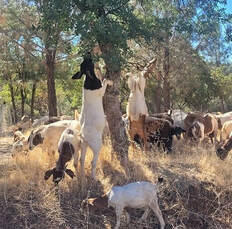 Oroville Recreation The California Department of Parks and Recreation (CA Parks), in compliance with the modification for the Greater Sacramento Region’s COVID-19 public safety restrictions, has opened Lake Oroville State Recreation Area (LOSRA) campgrounds at Bidwell Canyon, Loafer Creek, including the Equestrian Campground, and the Lime Saddle Campground. Enroute camping at the North Forebay and Spillway facilities is permitted. Group camping remains closed. Reservation capability does not open until April and camping sites will be allocated on a ‘first come-first serve’ basis. The Potters Ravine and North Fork trails are open for use. CA Parks encourages users to remain on the trails. Assessments by CA Parks staff of trail safety will continue through the winter. Additionally, day use facilities at Foreman Creek, Stringtown, and Enterprise, damaged by the September North Complex Fire, are now open to the public. The Lake Oroville Visitors Center remains closed. Visit the California Parks Lake Oroville State Recreation Area (LOSRA) webpage for current information on facility status as well as current requirements to protect public health during the COVID-19 pandemic. Information about recreation facilities can be found in DWR’s interactive map on the Lake Oroville Recreation webpage. For information about the Oroville Wildlife Area, including the Thermalito Afterbay, visit the California Department of Fish and Wildlife webpage. Photo: Equestrian campground at LOSRA's Loafer Creek Recreation Area Current Lake Operations The elevation of Oroville’s reservoir is about 701 feet elevation and storage is about 1.26 million acre-feet, 54 percent of historical average. Currently, in the Northern Sierra Basin, rainfall is below average, at 53 percent of normal for this time of year and snowpack is also below average at 69 percent of normal. Dry conditions will continue this weekend and are expected to remain into the week of Feb. 8. The total releases to the Feather River continues to be at 1,250 cfs to conserve storage in Lake Oroville. The Feather River flows consist of 800 cfs down the Low Flow Channel through the City of Oroville, and 450 cfs from the Thermalito Afterbay Outlet (Outlet) for a total of 1,250 cfs for the Feather River’s high flow channel downstream of the Outlet. The public can track precipitation, snow, reservoir levels, and more at the California Data Exchange Center at www.cdec.water.ca.gov. Lake Oroville is identified as “ORO”. All data as of midnight 2/4/2021 ### Know someone who would like to receive Community Updates? They can email their request to [email protected].  January 29, 2021 Wildfire Impacts on Water Quality In late 2020, several members of the multi-agency “Watershed Working Group”, led by the California Governor’s Office of Emergency Services (CalOES), conducted targeted monitoring of rivers, lakes, and other surface waters in the North Complex burn area and downstream. The Central Valley Regional Water Quality Control Board (Water Board), California Department of Water Resources (DWR), and the California Department of Fish and Wildlife (CDFW) collected and tested samples of surface waters throughout the North Complex Fire’s burn scar in Butte and Plumas counties. Results revealed some contaminant levels are elevated, but are lower than anticipated. The Water Board issued a news release today stating these elevated results are not impacting drinking water treatment facilities nor the quality of drinking water. While major wildfires often lead to subsequent water quality challenges in lakes, streams and other waterways, the lower than expected levels of contaminants could be linked to the relatively dry winter months in 2020. Water testing will continue and the Watershed Working Group will report results in the weeks ahead. The Water Board will alert the public if results show water quality may be further impacted. Photo: DWR water quality experts collect water samples at Lake Oroville Flood After Fire Preparedness Risks for mud and debris flows into communities and homes downslope of areas burned by wildfire are increased when precipitation events occur. In normal conditions, trees, shrubs, grass, and other protective groundcover allow rainfall to infiltrate into the soil. In addition to removing vegetation, a wildfire’s extreme heat can bake the soil, further preventing water penetration. Due to these changes, even a small storm system in burn scar areas can cause flash flooding and lead to mud and debris flows. It is important to stay alert and be prepared before flooding occurs. Being ready means knowing when to evacuate. Get the latest information from the National Weather Service at www.weather.gov – just enter your city or zip code. More information on flood after fire can be found in this short video as well as on the DWR website. Oroville Recreation Advisory Committee to Meet The Oroville Recreation Advisory Committee (ORAC) will meet Feb. 5. Due to the COVID-19 pandemic, the meeting will not be open to the public to protect public health. ORAC was established by the Federal Energy Regulatory Commission (FERC) to review and provide recommendations regarding the DWR Recreation Plan for the Lake Oroville State Recreation Area. To obtain a summary of the meeting, send a request to [email protected].  Oroville Recreation The California Department of Parks and Recreation (CA Parks), in compliance with the modification for the Greater Sacramento Region’s COVID-19 public safety restrictions, has opened Lake Oroville State Recreation Area (LOSRA) campgrounds at Bidwell Canyon, Loafer Creek, including the Equestrian Campground, and the Lime Saddle Campground. Enroute camping at the North Forebay and Spillway facilities is permitted. Group camping remains closed. Reservation capability does not open until April and camping sites will be allocated on a ‘first come-first serve’ basis. The Potters Ravine and North Fork trails are open for use. CA Parks encourages users to remain on the trails and assessments by CA Parks staff of trail safety will continue through the winter. Additionally, day use facilities at Foreman Creek, Stringtown, and Enterprise, damaged by the September North Complex Fire, are now open to the public. The Lake Oroville Visitors Center remains closed. Visit the California Parks Lake Oroville State Recreation Area (LOSRA) webpage for current information on facility status as well as current requirements to protect public health during the COVID-19 pandemic. Information about recreation facilities can be found in DWR’s interactive map on the Lake Oroville Recreation webpage. For information about the Oroville Wildlife Area, including the Thermalito Afterbay, visit the California Department of Fish and Wildlife webpage. Photo: Equestrian campground at LOSRA's Loafer Creek Recreation Area  California Conservation Corps Constructs Fish Habitat from Recycled Christmas Trees DWR and the California Conservation Corps (CCC) have completed constructing fish habitat structures at Lake Oroville and the Thermalito Afterbay using over 950 recycled Christmas trees. The trees were collected by Chico Boy Scout Troop 2 and the Biggs 4-H Club and delivered to DWR by Recology, a local waste management company. The habitat structures of stacked Christmas trees were created by threading wire cable through CCC-drilled holes in the trunks and anchoring the cable to the lakebed in various locations. Anchoring the trees allows them to stay submerged as the lake’s water level rises from winter storm and snowmelt inflows. The structures provide juvenile fish safe refuge, improving fisheries and recreational fishing opportunities. For over 25 years, DWR has worked with local groups to construct fish habitat structures, which is one of the longest continuously running fish habitat improvement programs in the State of California. Find more information on the project at DWR Updates. Photo: California Conservation Corps members anchor recycled Christmas trees to Lake Oroville's lakebed Current Lake Operations The elevation of Oroville’s reservoir is about 697 feet elevation and storage is about 1.23 million acre-feet, 35 percent of average. Currently, in the Northern Sierra Basin, rainfall is below average, at 51 percent of normal for this time of year and snowpack is also below average at 64 percent of normal. Precipitation is forecast through the middle of the first week of February with dry conditions afterwards. The total releases to the Feather River continues to be at 1,250 cfs to conserve storage in Lake Oroville. The Feather River flows consist of 800 cfs down the Low Flow Channel through the City of Oroville, and 450 cfs from the Thermalito Afterbay Outlet (Outlet) for a total of 1,250 cfs for the Feather River’s high flow channel downstream of the Outlet. Additional flow and visible increases in the elevation of the Feather River are due to significant runoff from this week’s storms. The public can track precipitation, snow, reservoir levels, and more at the California Data Exchange Center at www.cdec.water.ca.gov. Lake Oroville is identified as “ORO”. All data as of midnight 1/28/2021 ### Know someone who would like to receive Community Updates? They can email their request to [email protected]. |
Archives
May 2024
Categories
All
|

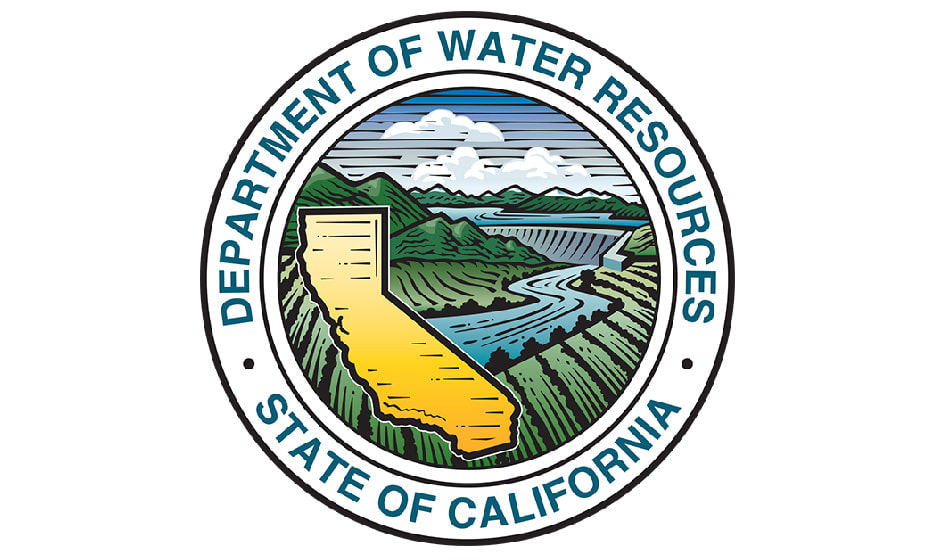
 RSS Feed
RSS Feed